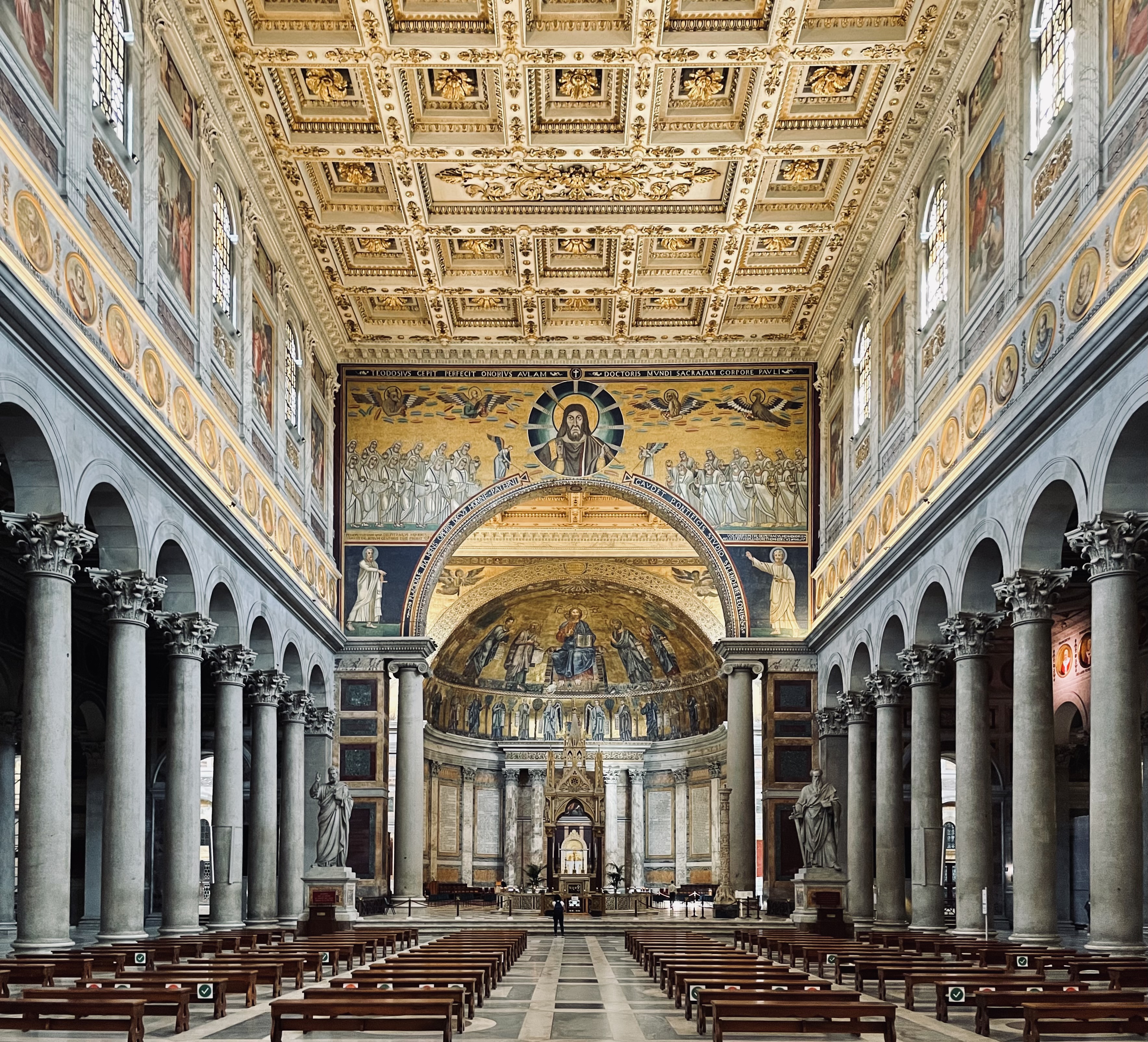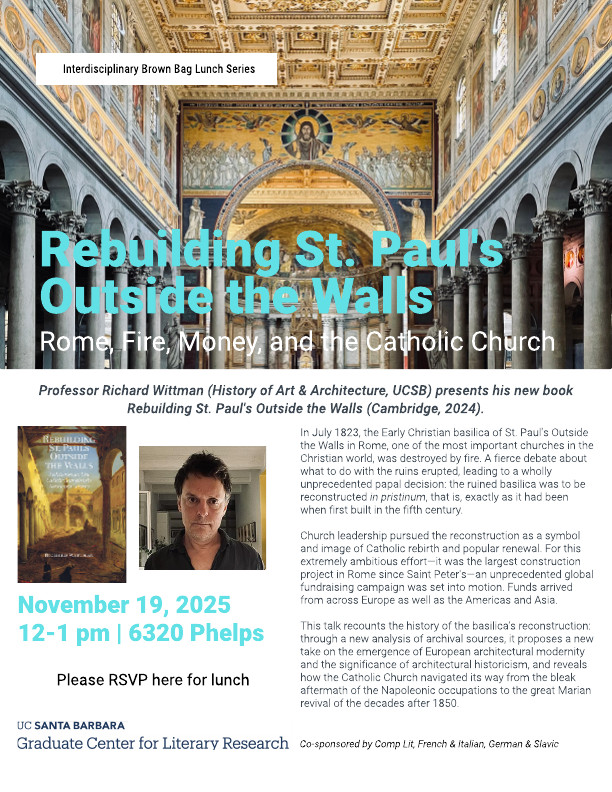
Interdisciplinary Brown Bag Lecture Series
Wednesday, 11/19, 12-1pm, 6320 Phelps Hall
Co-sponsored by Comparative Literature, French & Italian, German and Slavic Studies, Graduate Center for Literary Research
In July 1823, the Early Christian basilica of St. Paul's Outside the Walls in Rome, one of the most important churches in the Christian world, was destroyed by fire. A fierce debate about what to do with the ruins erupted, leading to a wholly unprecedented papal decision: the ruined basilica was to be reconstructed in pristinum, that is, exactly as it had been when first built in the fifth century.
Church leadership pursued the reconstruction as a symbol and image of Catholic rebirth and popular renewal. For this extremely ambitious effort? it was the largest construction project in Rome since Saint Peter's? an unprecedented global fundraising campaign was set into motion. Funds arrived from across Europe as well as the Americas and Asia.
This talk recounts the history of the basilica's reconstruction: through a new analysis of archival sources, it proposes a new take on the emergence of European architectural modernity and the significance of architectural historicism, and reveals how the Catholic Church navigated its way from the bleak aftermath of the Napoleonic occupations to the great Marian revival of the decades after 1850.
